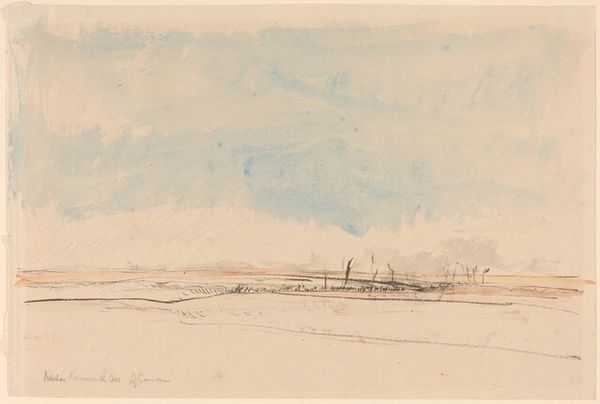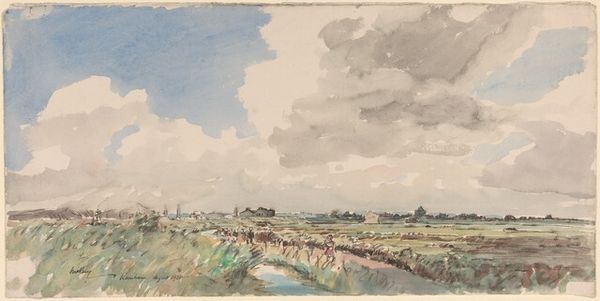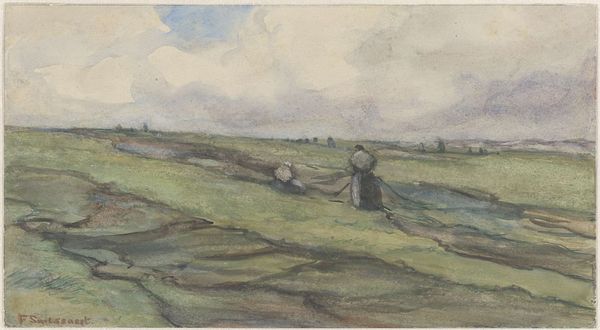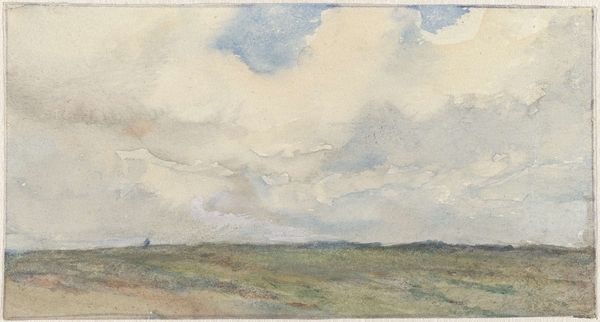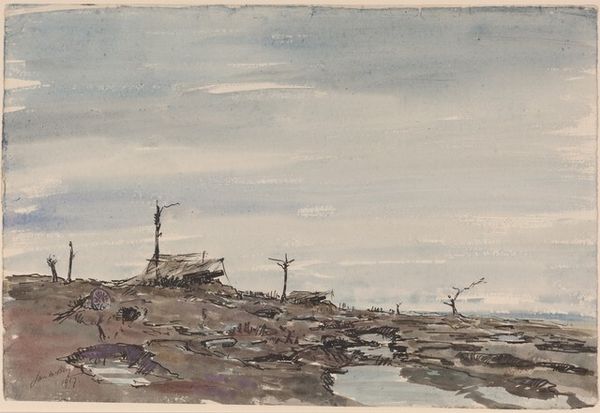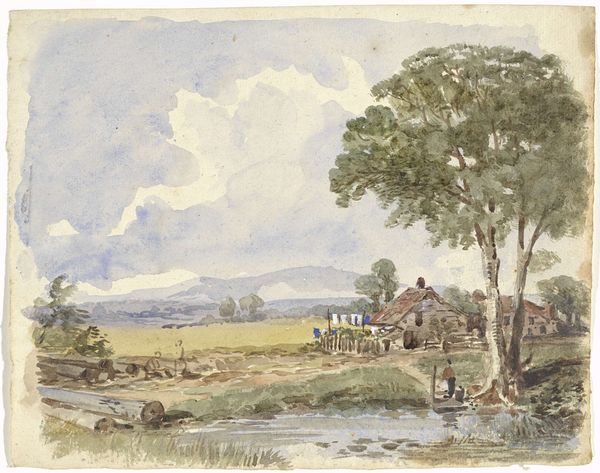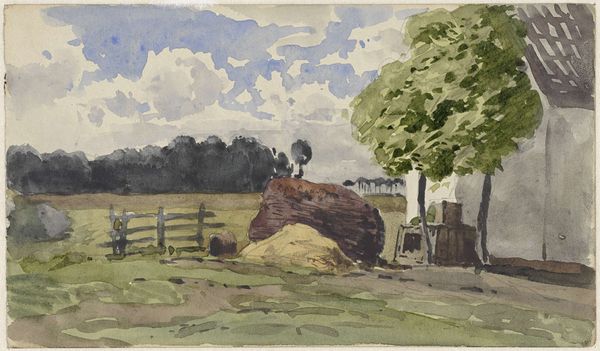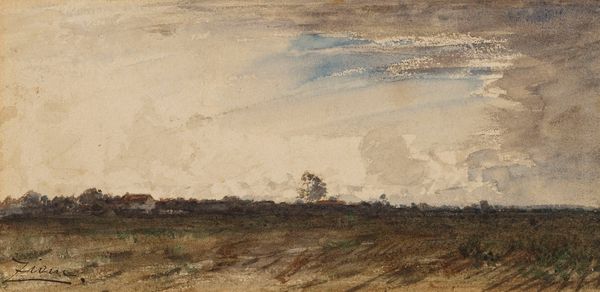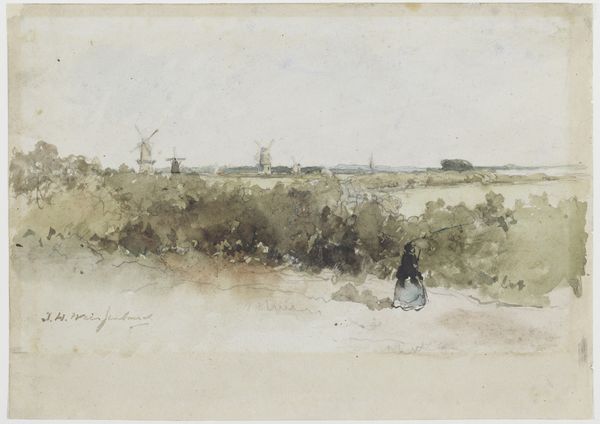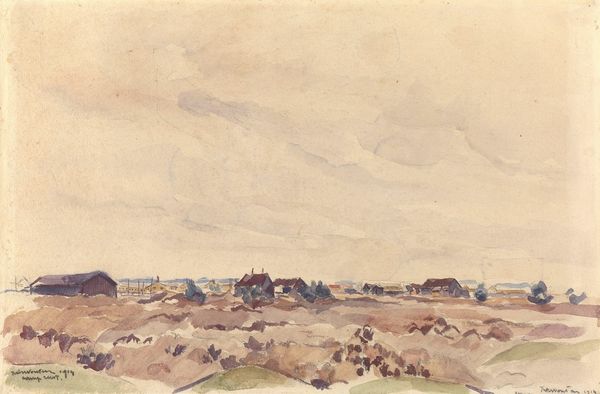
Dimensions: overall (approximate): 28.3 x 38.9 cm (11 1/8 x 15 5/16 in.)
Copyright: National Gallery of Art: CC0 1.0
Editor: Here we have James McBey’s watercolor and colored pencil drawing, "Sea Lavender," from 1914. It's surprisingly peaceful, almost melancholic, for a landscape. What stands out to you in this piece? Curator: Well, seeing "Sea Lavender," especially knowing it was created on the cusp of World War I, I'm drawn to how it might subtly reflect anxieties of the time. The lone figure, the expansive, somewhat bleak landscape – does that speak to a sense of isolation or perhaps even impending loss, felt at a societal level? Consider, for instance, the limited palette and the figure’s separation from the viewer via that weathered fence. Do you think this might also relate to broader social anxieties surrounding industrialization, and humanity's place in the natural world? Editor: That's interesting! I hadn’t considered the pre-war context. So the fence isn't just a fence; it's also creating a social divide? Curator: Exactly. Consider the fence as a symbol, too; of property, ownership, but also separation. In terms of identity, who has access to nature and the means to portray such scenes? It hints at social and economic stratification within society at the time. What feelings did this artwork initially invoke for you? Editor: A sense of quiet observation. But knowing what you've said, I see a tension now between that personal quiet and the larger historical narrative, the artist maybe acknowledging a world about to be torn apart. Curator: Precisely. And reflecting on those themes is part of what makes art relevant, enabling us to relate history and reflect on modern times. Editor: It really changes the way I see this "peaceful" landscape. Thanks, that’s helpful! Curator: My pleasure! I, too, learned to appreciate seeing your perspective on observation and initial reaction.
Comments
No comments
Be the first to comment and join the conversation on the ultimate creative platform.
